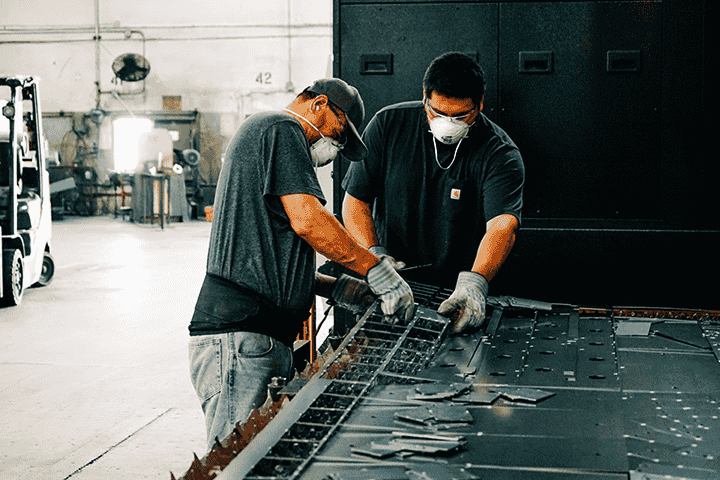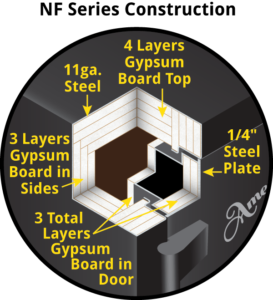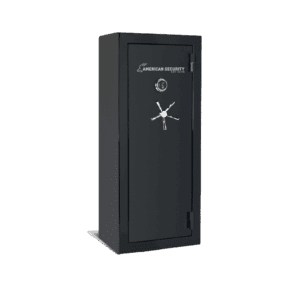If you’re in the market for a safe, you’ve probably already seen models that offer fire protection via gypsum board, or otherwise referred to as drywall. However, during your research, you might have also noticed there’s some online speculation about whether this is an effective material for fireproof safes.
While there’s no such thing as a 100% fireproof safe, drywall/fire boards can offer a decent level of fire protection. But, there are some pros and cons you should consider before you make your final decision on what type of fire resistance your valuables should have.
Pros of Gypsum Board for Fireproof Safes
First, let’s jump into some of the positives that come with gypsum board/drywall and some reasons why you would choose this material.
Inexpensive
If you’re searching for an economical option, drywall will most likely not cause a spike in the price of a safe. This material is easy to source, which keeps the manufacturing costs low. Overall, drywall is a great option for homeowners who need a secure storage solution that doesn’t require a large investment.
Fire Resistance
While gypsum board is inexpensive, it can still offer a decent amount of fire protection. This is achieved through the chemically-bound water molecules that are released as steam when exposed to intense heat, helping to regulate interior temperatures temporarily. Safes manufactured with drywall still achieve impressive fire ratings that can range from 30 minutes to 2 hours. This is because when drywall is paired with thick steel, a safe has a high chance of withstanding high temperatures for quite some time.
Lightweight Construction
Drywall is a lightweight, fire-resistant material for safes. This may sound like a negative, but it’s actually a positive. In many cases, this allows manufacturers to install thicker steel in the body of the container, which will improve the level of fire and burglary protection as a result.
AMSEC Safes That Feature Gypsum Board: The NF Series
Our NF safes are built with multiple layers of gypsum board, which in turn allows us to add on more steel that serves as a barrier for both burglars and high temperatures. These models have been rigorously tried and tested, receiving a 90-minute fire rating at 1200°F as a result.
NF5924
Cons of Drywall for Fireproof Safes
Since we covered some of the pros, it’s important to weigh the cons of drywall before you select your safe.
Moisture Risk
As we mentioned earlier, drywall provides fire protection due to its composition of releasing steam once it’s exposed to high heat. Evaluate your inventory and what items could be affected by this method of fire resistance.
Not Designed for Burglary Resistance
While drywall is lightweight, that means it also does not contribute to protecting your cherished items from forced entry. However, since it doesn’t hold a significant weight, you can compensate for this with thick steel surrounding the material. When you’re browsing different safe models, make sure they feature a thick steel gauge that could hold up against pry and/or drill attacks.
Gaps in Construction
Additionally, gypsum boards often leave gaps (air pockets) when added to a safe, whereas other poured materials offer a seamless alternative that provides a higher level of fire protection. Panels of drywall can still withstand high heat, but if you’re looking for top-tier fire-resistant materials, there are a few other options that might be a better fit for your needs.
Even though drywall offers a good level of fire resistance, it’s not considered the best of the best for fire protection. If you’re open to considering other material alternatives, there are quite a few other options to choose from.
Next, let’s dig into these alternative fill materials so that you can get some clarity on the choices you can pick from.
Alternative Materials on the Market for Fireproof Safes
Drywall is a quality material that can offer a level of fire protection for your valuables. But before you make your final decision, browse the other fill materials and evaluate their different levels of fire resistance.
AMSEC DryLight
Another lightweight option is our proprietary DryLight material. However, there are a few key differences between this and drywall. First and foremost, DryLight doesn’t leave any gaps inside the walls of the safe. This keeps the composition airtight and prevents heat from easily penetrating the interior.
AMSEC Safes with DryLight: The BFX Series
Some of the American Security models that feature DryLight fill material can be found in our BFX safe series. These are some of our bestselling gun safes, as they’re bolstered with this poured proprietary fill material and thick steel, achieving a 2-hour ETL fire rating.
BFX6024
Fire Clay
You can often find fire clay within kilns and chimneys, and it can provide a significant amount of fire protection. With an incredible melting point of 3,002°F, fire clay is 43% denser than materials like gypsum board/drywall.
AMSEC Safes with Fire Clay: The BF Series
With 60-minute fire ratings and a UL RSC Level I security rating, the BF series is built to last. In fact, these models are the only UL-rated high-security home safes on the market. Additionally, the fire clay that’s poured between the thick steel is a huge component in making these safes capable of withstanding destructive flames for up to at least an hour.
BF1512
High-Strength Concrete
The heaviest option is high-strength concrete. While this material can add a significant amount of weight to a safe, it also provides a great deal of fire and burglary protection. Constructing a safe with this type of fireproof material could bump up the price of the model, but this type of investment is worth it if it will provide you with some peace of mind.
AMSEC Safes With High-Strength Concrete: TL-Rated Series
We have a range of TL-15 and TL-30 rated safes that feature high-strength concrete. TL-15 is built with concrete that’s 162% denser than standard drywall, and then the TL-30 is a bit stronger, where it’s 172% denser than drywall. This concrete, paired with thick steel, helps these safes protect against forced entry and offer a significant level of fire protection.
ACF2020XD
Evaluate Your Needs for a Fireproof Safe
Before choosing a safe, think carefully about the level of fire protection that makes sense for your situation, especially if you live in a wildfire-prone area or plan on storing irreplaceable valuables. A fire-rated safe can offer the peace of mind you need for when the unexpected happens.
While drywall-lined safes can offer decent protection, your final decision should weigh factors like your budget, the types of items you’re storing, and your local fire risk. Higher-end safes with composite or concrete insulation may offer longer-lasting protection and added security if that’s what you require.
Nothing is worse than evacuating and waiting out the long hours of a wildfire, wondering if your valuables have a chance of withstanding the flames. At least with a fire-rated safe, you can rest assured that you invested in the best option for these case scenarios and have given your valuables the best chance of survival. Don’t wait until it’s too late–give your belongings the protection they deserve.





